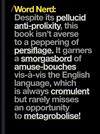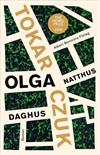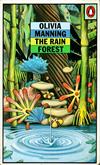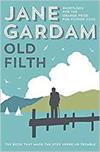
The Life-Changing Magic of Tidying Up: The Japanese Art of Decluttering and Organizing
Registered by  GoryDetails
GoryDetails of Nashua, New Hampshire USA on 1/9/2015
of Nashua, New Hampshire USA on 1/9/2015
 This book is in a Controlled Release!
This book is in a Controlled Release!
 GoryDetails
GoryDetails of Nashua, New Hampshire USA on 1/9/2015
of Nashua, New Hampshire USA on 1/9/2015 This book is in a Controlled Release!
This book is in a Controlled Release!
3 journalers for this copy...
The latest in my ongoing habit of buying how-to-get-organized books - which I like to read instead of, you know, actually tidying things up! This little hardcover looked appealing, and may offer some ideas that I haven't come across before.
Later: Not what I expected! Oh, it does have organizational tips, starting with perhaps the most important one - discard everything that does not "spark joy", a pretty good rule of thumb (with exceptions for the vital-records-type items that may not spark joy by their presence but could remove it by their absence). But the rest of the book is not only aimed at tiny (by US standards) Japanese homes, but features the author's biases regarding the percentage of, say, clothing among one's possessions. Seriously, she's got pages and pages on folding one's clothing - even socks and underwear - for optimum storage, which all strikes me as quite excessive!
It isn't that her ideas are bad, just that they aren't practical for all spaces. Her prime directive, after "discard", is "organize your space thoroughly, completely, in one go" - which even for my modest-by-US-standards under-1000-sq-ft. house is wildly optimistic. The idea behind this is good - if you can get your entire living space purged of unnecessary items and organized such that everything has a proper place, maintaining this new mode will be much easier, while trying to tackle it piecemeal could result in lots of shifting of things from one room to another while making less progress. But, practically speaking, I think some form of incremental tidying can work well - you just have to keep after it, and beware of the all-too-tempting thought "I'll just stack this stuff in the spare room/basement/corner until I have time to get around to it".
Other aspects of the book certainly resonated with me, from the tendency to want to tidy up some random part of the house when one is under pressure in other quarters, by way of controlling *something* in a world that's out of control. And her general belief that restructuring one's personal environment into a more functional, beautiful, and joy-inspiring mode can improve one's quality of life - that, too, I agree with. It's just that I don't think she allows for differences in personalities, not to mention size of property! (In fact, one section is titled "Don't change the method to suit your personality," with the explanation including her statement that she's never encountered anyone who's purely a "can't throw it away" type - seems she never watches "Hoarders".)
I found parts of the book quite amusing, such as the author's descriptions of her youthful efforts at tidying; seems she loved the "discard it" concept so much that even early on she helpfully purged the belongings of siblings or schoolmates - without their permission! She grew out of that, and has switched the "what to discard" idea for "what to keep" - that is, when faced with heaps-o-stuff, consider which if any of the items give you joy, and keep only those. [This might be easier said than done, but as a rule of thumb it's not bad. The suggestion to actually pick up or touch each individual item, though - with clothing as the example - this brings me back to some fundamental differences I have with the author regarding Things I Value.]
While the sort-the-clothing chapters didn't do much for me, my ears pricked up when I got to the section on books - which starts with "put all your books on the floor". Um, wait - I'm a BookCrosser. Half of my books are already on the floor. Yay? But she does go on to say that, like clothes or other items, "books that have been left untouched on the shelf for a long time are dormant. Or perhaps I should say that they're 'invisible'." Now THAT is very true indeed, as I've discovered whenever I evaluate my bookshelves book-by-book. "I still have that? Why?" Her theme of "does it spark joy" involves touching each book - but NOT starting to read it, as "reading clouds your judgment". I laughed aloud at that - and in a way it's true; start reading and I'm lost, doomed to sit on the floor with the newly-rediscovered book, possibly for hours...
Regarding books one has had for a long time but not yet read, she suggests that "if you haven't read it by now, the book's purpose was to teach you that you didn't need it" - possibly a helpful rationale for getting rid of unread books without feeling guilty about it.
There are other helpful hints here, the value of which will vary according to individual situations and habits. I liked "never pile things", which I should have tattooed on my hands to remind me - once I put one single item on top of another item, any hope of remembering what's where - or of refraining from building an entire heap - is gone.
Among the more ethno-centric advice: "make the top shelf of the bookcase your personal shrine". This could be translated into other forms for people who don't have shrines - a spot for family photos, for example. I keep most of my bookshelf tops free, though, since the cat likes to sit up there - which I guess makes it a shrine after all!
And then there's the advice to appreciate your belongings - personally, as in thanking one's clothing for keeping one warm, etc. An attitude of mindfulness and thankfulness isn't a bad thing, and might help remind one to care for one's possessions properly... "Thank you, TV remote control, for continuing to channel-surf so well. I shall change your batteries soon!"
A very interesting and entertaining read, with some good ideas and a few eye-rolls (I will NOT be folding my clothes into neat little rectangles that can stand on end in the drawers). The most important bits have to do with being much more selective about what you choose to bring into your house, and about caring for them properly once you own them.
Later: Not what I expected! Oh, it does have organizational tips, starting with perhaps the most important one - discard everything that does not "spark joy", a pretty good rule of thumb (with exceptions for the vital-records-type items that may not spark joy by their presence but could remove it by their absence). But the rest of the book is not only aimed at tiny (by US standards) Japanese homes, but features the author's biases regarding the percentage of, say, clothing among one's possessions. Seriously, she's got pages and pages on folding one's clothing - even socks and underwear - for optimum storage, which all strikes me as quite excessive!
It isn't that her ideas are bad, just that they aren't practical for all spaces. Her prime directive, after "discard", is "organize your space thoroughly, completely, in one go" - which even for my modest-by-US-standards under-1000-sq-ft. house is wildly optimistic. The idea behind this is good - if you can get your entire living space purged of unnecessary items and organized such that everything has a proper place, maintaining this new mode will be much easier, while trying to tackle it piecemeal could result in lots of shifting of things from one room to another while making less progress. But, practically speaking, I think some form of incremental tidying can work well - you just have to keep after it, and beware of the all-too-tempting thought "I'll just stack this stuff in the spare room/basement/corner until I have time to get around to it".
Other aspects of the book certainly resonated with me, from the tendency to want to tidy up some random part of the house when one is under pressure in other quarters, by way of controlling *something* in a world that's out of control. And her general belief that restructuring one's personal environment into a more functional, beautiful, and joy-inspiring mode can improve one's quality of life - that, too, I agree with. It's just that I don't think she allows for differences in personalities, not to mention size of property! (In fact, one section is titled "Don't change the method to suit your personality," with the explanation including her statement that she's never encountered anyone who's purely a "can't throw it away" type - seems she never watches "Hoarders".)
I found parts of the book quite amusing, such as the author's descriptions of her youthful efforts at tidying; seems she loved the "discard it" concept so much that even early on she helpfully purged the belongings of siblings or schoolmates - without their permission! She grew out of that, and has switched the "what to discard" idea for "what to keep" - that is, when faced with heaps-o-stuff, consider which if any of the items give you joy, and keep only those. [This might be easier said than done, but as a rule of thumb it's not bad. The suggestion to actually pick up or touch each individual item, though - with clothing as the example - this brings me back to some fundamental differences I have with the author regarding Things I Value.]
While the sort-the-clothing chapters didn't do much for me, my ears pricked up when I got to the section on books - which starts with "put all your books on the floor". Um, wait - I'm a BookCrosser. Half of my books are already on the floor. Yay? But she does go on to say that, like clothes or other items, "books that have been left untouched on the shelf for a long time are dormant. Or perhaps I should say that they're 'invisible'." Now THAT is very true indeed, as I've discovered whenever I evaluate my bookshelves book-by-book. "I still have that? Why?" Her theme of "does it spark joy" involves touching each book - but NOT starting to read it, as "reading clouds your judgment". I laughed aloud at that - and in a way it's true; start reading and I'm lost, doomed to sit on the floor with the newly-rediscovered book, possibly for hours...
Regarding books one has had for a long time but not yet read, she suggests that "if you haven't read it by now, the book's purpose was to teach you that you didn't need it" - possibly a helpful rationale for getting rid of unread books without feeling guilty about it.
There are other helpful hints here, the value of which will vary according to individual situations and habits. I liked "never pile things", which I should have tattooed on my hands to remind me - once I put one single item on top of another item, any hope of remembering what's where - or of refraining from building an entire heap - is gone.
Among the more ethno-centric advice: "make the top shelf of the bookcase your personal shrine". This could be translated into other forms for people who don't have shrines - a spot for family photos, for example. I keep most of my bookshelf tops free, though, since the cat likes to sit up there - which I guess makes it a shrine after all!
And then there's the advice to appreciate your belongings - personally, as in thanking one's clothing for keeping one warm, etc. An attitude of mindfulness and thankfulness isn't a bad thing, and might help remind one to care for one's possessions properly... "Thank you, TV remote control, for continuing to channel-surf so well. I shall change your batteries soon!"
A very interesting and entertaining read, with some good ideas and a few eye-rolls (I will NOT be folding my clothes into neat little rectangles that can stand on end in the drawers). The most important bits have to do with being much more selective about what you choose to bring into your house, and about caring for them properly once you own them.
Journal Entry 2 by  GoryDetails
GoryDetails at Panera Bread, 299 Harvard St. in Brookline, Massachusetts USA on Saturday, May 30, 2015
at Panera Bread, 299 Harvard St. in Brookline, Massachusetts USA on Saturday, May 30, 2015
 GoryDetails
GoryDetails at Panera Bread, 299 Harvard St. in Brookline, Massachusetts USA on Saturday, May 30, 2015
at Panera Bread, 299 Harvard St. in Brookline, Massachusetts USA on Saturday, May 30, 2015
Released 8 yrs ago (5/30/2015 UTC) at Panera Bread, 299 Harvard St. in Brookline, Massachusetts USA
WILD RELEASE NOTES:
I'm taking this to the Boston BookCrossers meetup at Panera Bread in Brookline at 2 pm, for anyone who'd like to read it - whether you're attending the meetup or not! Hope someone enjoys the book!
What a fun and inspiring gem of a book!!
I worship Marie Kondo. She has translated her lifelong interest in (obsession with) organizing and tidying into expertise in helping you live a happier life. By freeing yourself of any possessions that do not bring you joy, you confront and let go of regrets from the past, and release yourself from fears about the future. Examples are, respectively, clothes that you bought but never wear and which remind you of your unwise shopping choices every time you face them, and excessive stockpiles of toilet paper or other supplies that clutter your home. The very act of purging our homes of any objects that do not spark joy hones our decision-making skills and thus clarifies our values in a very visible and tangible way. The tidy space that results will be a welcoming and restful home that showcases what is most precious and meaningful to us.
For those of us (me included) who would might otherwise dwell on the wastefulness of "discarding" (via donation, re-gifting, recycling, or dumping) objects that are perfectly usable simply on the basis of their not being beloved, Kondo offers a helpful, joyful perspective on this process. She asserts that all objects in our life desire to be of service to us. The un-cherished ones "know" they're not bringing us pleasure, and would prefer to be released to another person or place where they can better fulfill their duties. We, as the possessors, have the time and energy to cherish and properly care for only a limited number of objects, so we owe it to our less-loved objects to release them.
Kondo boasts a 0% rate of recidivism back to disorderliness among people who follow her program. We'll see how things go for me after I've set my house in order.
In the interest of full disclosure, I've been for years a subscriber to the minimalist mindset, not to say that I've been entirely successful in reducing my possessions or simplifying my lifestyle. But I was, from the start, very receptive to the ideas presented in this book.
This book may well have found its home in my teeny-tiny permanent collection.
I worship Marie Kondo. She has translated her lifelong interest in (obsession with) organizing and tidying into expertise in helping you live a happier life. By freeing yourself of any possessions that do not bring you joy, you confront and let go of regrets from the past, and release yourself from fears about the future. Examples are, respectively, clothes that you bought but never wear and which remind you of your unwise shopping choices every time you face them, and excessive stockpiles of toilet paper or other supplies that clutter your home. The very act of purging our homes of any objects that do not spark joy hones our decision-making skills and thus clarifies our values in a very visible and tangible way. The tidy space that results will be a welcoming and restful home that showcases what is most precious and meaningful to us.
For those of us (me included) who would might otherwise dwell on the wastefulness of "discarding" (via donation, re-gifting, recycling, or dumping) objects that are perfectly usable simply on the basis of their not being beloved, Kondo offers a helpful, joyful perspective on this process. She asserts that all objects in our life desire to be of service to us. The un-cherished ones "know" they're not bringing us pleasure, and would prefer to be released to another person or place where they can better fulfill their duties. We, as the possessors, have the time and energy to cherish and properly care for only a limited number of objects, so we owe it to our less-loved objects to release them.
Kondo boasts a 0% rate of recidivism back to disorderliness among people who follow her program. We'll see how things go for me after I've set my house in order.
In the interest of full disclosure, I've been for years a subscriber to the minimalist mindset, not to say that I've been entirely successful in reducing my possessions or simplifying my lifestyle. But I was, from the start, very receptive to the ideas presented in this book.
This book may well have found its home in my teeny-tiny permanent collection.
 The Life-Changing Magic of Tidying Up: The Japanese Art of Decluttering and Organizing by Marie Kondō
The Life-Changing Magic of Tidying Up: The Japanese Art of Decluttering and Organizing by Marie KondōMy rating: 4 of 5 stars
When this first came out, it was an absolute revelation. Pick up each item you own and ask yourself, "does it spark joy!!?" Now, years, later, I think the book has become something of a meme. Indeed, Kondō provides very good tips on how to declutter and really value the possessions that you want, that speak to you.
Couple of issues with the approach. I think the author is presuming a certain level of hetero-normativity - references to purses, dresses, clothing in general (lots of references to clothing) seem to gear towards those inclined to traditional gender roles inhabited by small-number households. Would like to see the approach (or a version of it) applied to larger, multi-generational families.
There's also some research I'd read that households of lesser means are more inclined to save their belongings, that possessions are tied to a deep sense of identity - this might be in response to not having access to means or opportunities earlier in life, based on socio-economic status. Thus, Kondō's thesis comes off as a bit privileged ... i.e. only those who can afford to are the ones that can declutter (and, by proxy, are the only ones who can afford her exorbitant consulting fees). A more honest discussion of how socioeconomics affects one's desire, enthusiasm, and ability to tidy up, is warranted.
One more thing - so much talk of trash bags full of unwanted stuff - has Kondō not heard of recycling? Where does all this trash go?
As for me, since the book (as cute as it is to hold and look at) no longer 'sparks joy,' I'm ready to hand it off!
View all my reviews
I'm ready to release this one, as it doesn't 'spark' as much 'joy' as it used to!















